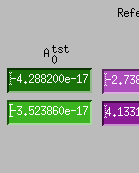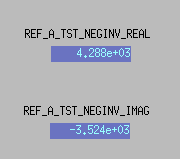After pulling the latest ASC_MASTER.mdl and talking to Adam at LLO, I added the following channels in ASC_MASTER to the science frame in addition to what Adam did:
ASC-DC1_P_OUT_DQ , (also Y, also DC2, DC3, DC4 and DC5): 512Hz
ASC-OMC_A_PIT_OUT_DQ (also YAW and SUM, also B): 2kHz
I then changed H1ASC.mdl to use the new ASC_MASTER. Dave compiled the model without an error. We'll install it tomorrow.
Some details:
0: Pzt outputs for new POPX thing is terminated at LHO.
At LLO this is connected to DAC, but here I simply terminated the output.
1: Initial Alignment system (obsolete, not used these days) are purged from h1 model.
This was purged from the latest ASC_MASTER. To accomodate this, access to ALS_X_REFL_B_LF_RFM, and ALS_X_REFL_B_LF_RFM_IPC_ERR, and their Y-arm counterparts, were all deleted from the top level.
2: DARM_CTRL and IM4_TRANS_PIT and YAW input for the common block are terminated in h1 model
This is a part of LLO dither scheme, but I just terminated these input in h1 model.
3: Unused PZT[12][XY]_[PY] and QPD[12][XY]_[PY] are gone from ASC_MASTER.
These were already obsoleted by green WFS at LHO and were terminated at the top level at LHO. Now these signals are gone.
4: New dither outputs are connected to some masses in h1 model.
New ASC_MASTER has dither outputs to BS, ITMs and ETMs in addition to PRM, PR2 and PR3.
In the old h1 model, RFM sender to corresponding optics already existed but was sending 1 or 2 (constant). In the new h1 model these things are connected to the dither output even though we do not use dither these days.
There are unused RFM sender to SRM, SR2 and SR3, these are kept there.
5: Deleted some obolete text labels and an unused orphaned RFM receiver in h1 model.


































